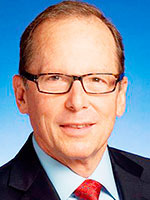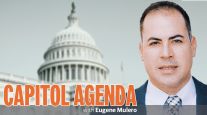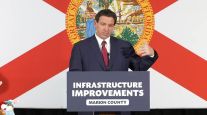Staff Reporter
Trump Infrastructure Plan Will Limit Regulations, DOT Exec Says
WASHINGTON—President Donald Trump’s infrastructure plan will include a concerted effort to limit the regulatory checkpoints projects must pass through, according to a leading U.S. Department of Transportation official.
James Ray, special adviser to Transportation Secretary Elaine Chao on infrastructure matters, said one of the White House’s goals is to reduce the amount of regulations that can sometimes stymie initiatives. He said the administration wants to solve the “two for one problem,” which refers to when two new regulations are set up after one is eliminated. Ray delivered the keynote address at the Transportation Research Board’s annual meeting luncheon Jan. 10.
pic.twitter.com/r0vQTshptQ — Eugene Mulero (@eugenemulero) January 10, 2018
Ray said that typical highway projects can involve as many as 10 federal agencies, but will oftentimes not identify a single point of contact to serve as a liaison. He cited one bridge project that involved consultation with 55 agencies and required nearly as many permits.
“There are things we can do ourselves. I think the thesis here is we can accomplish regulatory goals and do so in way not overly burdensome to the American economy,” Ray said. “We can do more with less. I think that we can find ways to deliver on the regulatory agenda and do it cheaper and better.”
Tennessee Department of Transportation Commissioner John Schroer said that meetings with Trump have indicated that the president’s goal is to reduce the amount of time to get a project permitted.

Schroer
“If we can cut that time down, it’ll save taxpayers a huge amount of money,” said Schroer, who also serves as the president of the American Association of State Highway and Transportation Officials.
Schroer’s meeting with Trump marks one of a string of sessions the president has hosted with state transportation leaders. According to Ray, the White House tasked DOT with scheduling meetings with state DOT directors in an effort to assess transportation issues “from soup to nuts.”
Ray said White House officials also have met with other agencies at the federal level that have a say in developing transportation projects, such as the U.S. Fish and Wildlife Service, as well as the Departments of Energy and Veterans Affairs.
“I don’t know of any circumstance where the president has wanted a meeting dedicated to state DOT secretaries and the problems they encounter,” Ray said. “The interaction that took place between the president and them was nothing short of remarkable. There was a kinship that was developed between them.”
Trump has yet to unveil his infrastructure plan. While the minutiae of the $1 trillion, 10-year infrastructure plan remain murky, the White House has explained that $200 billion would come from existing federal accounts, while the remaining $800 billion will come from private-sector investments.
Ray said infrastructure is the topic of frequent and focused discussion at the White House, citing Trump’s history as a builder as one reason for the administration’s emphasis on the issue.
“I can’t remember a time when infrastructure has occupied such a front-row seat on policy dialogue,” Ray said. “I think that’s in no small part due to our president.”




